Abstract
The control of responding by the location of tone bursts of 0.2- or 50-msec rise time was investigated in three albino rats. The apparatus consisted of an enclosure with two levers, two loudspeakers (in different locations), and a dipper feeder. The animal was exposed to tone bursts from either one or the other of the two speakers, and the speaker through which the tone bursts were delivered on any particular trial alternated in an irregular manner. Responses on one lever were reinforced with food in the presence of tone bursts from one speaker; responses on the second lever were reinforced with food in the presence of tone bursts from the second speaker. Responding came under the control of the location of 4-kHz tone bursts of 0.2-msec rise time within the first session. At this rise time, animals maintained a stable level of correct responding of greater than 95%. When the rise time was increased to 50 msec the percentage of correct responding fell to an average of 80 to 85%. It was concluded that location of an auditory stimulus is a powerful controller of responding in rats and that the degree of control is dependent upon rise time.
Full text
PDF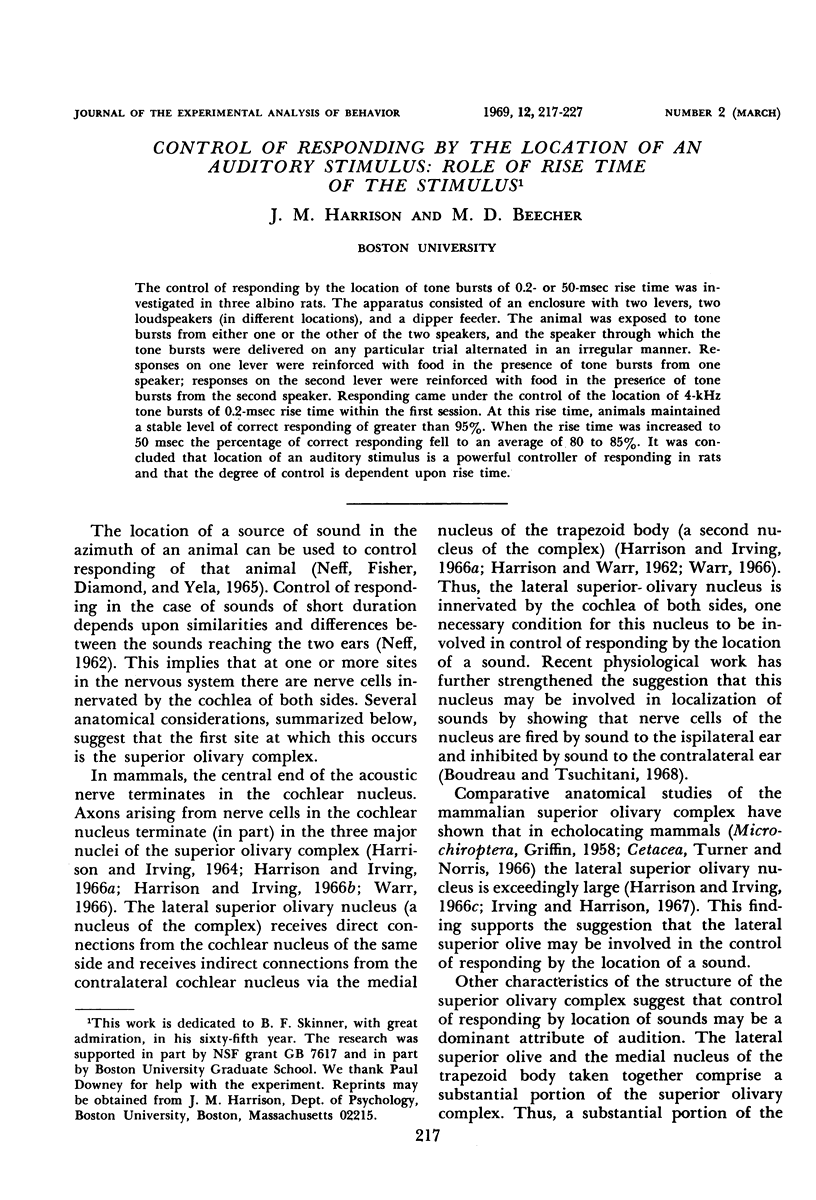
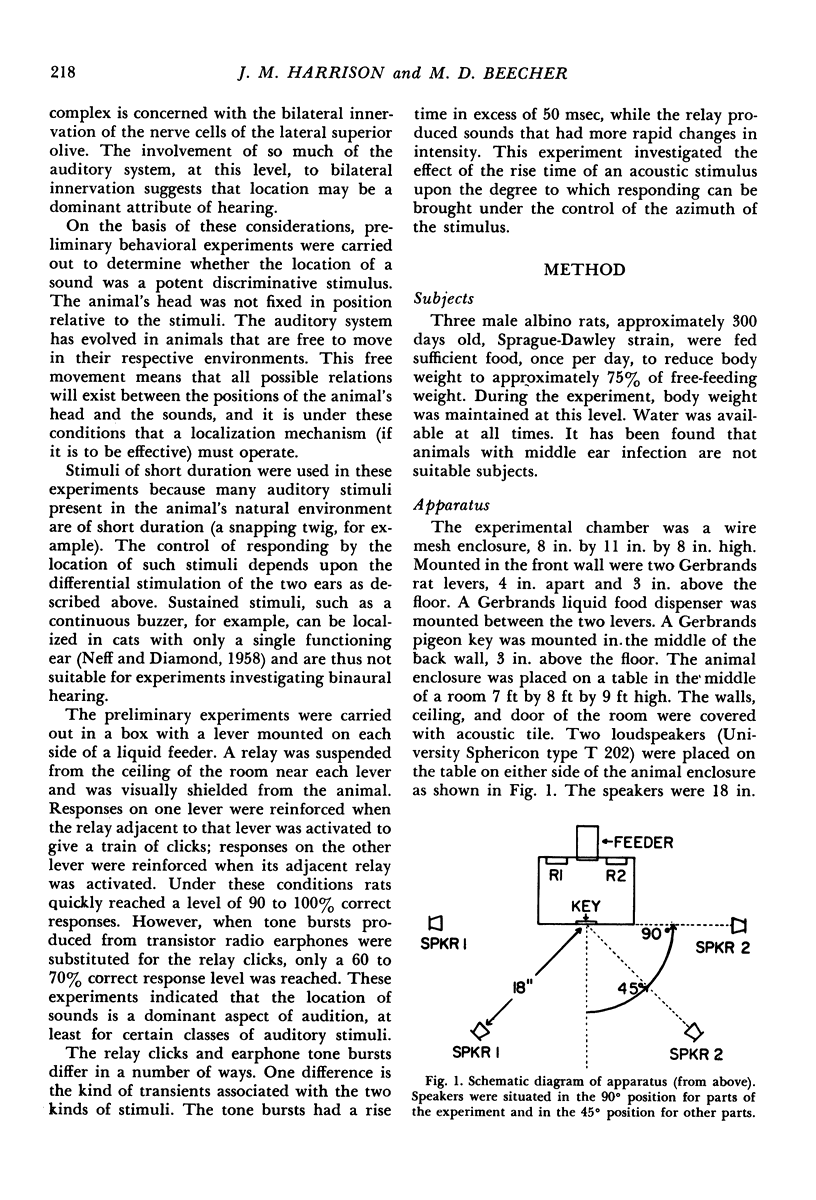
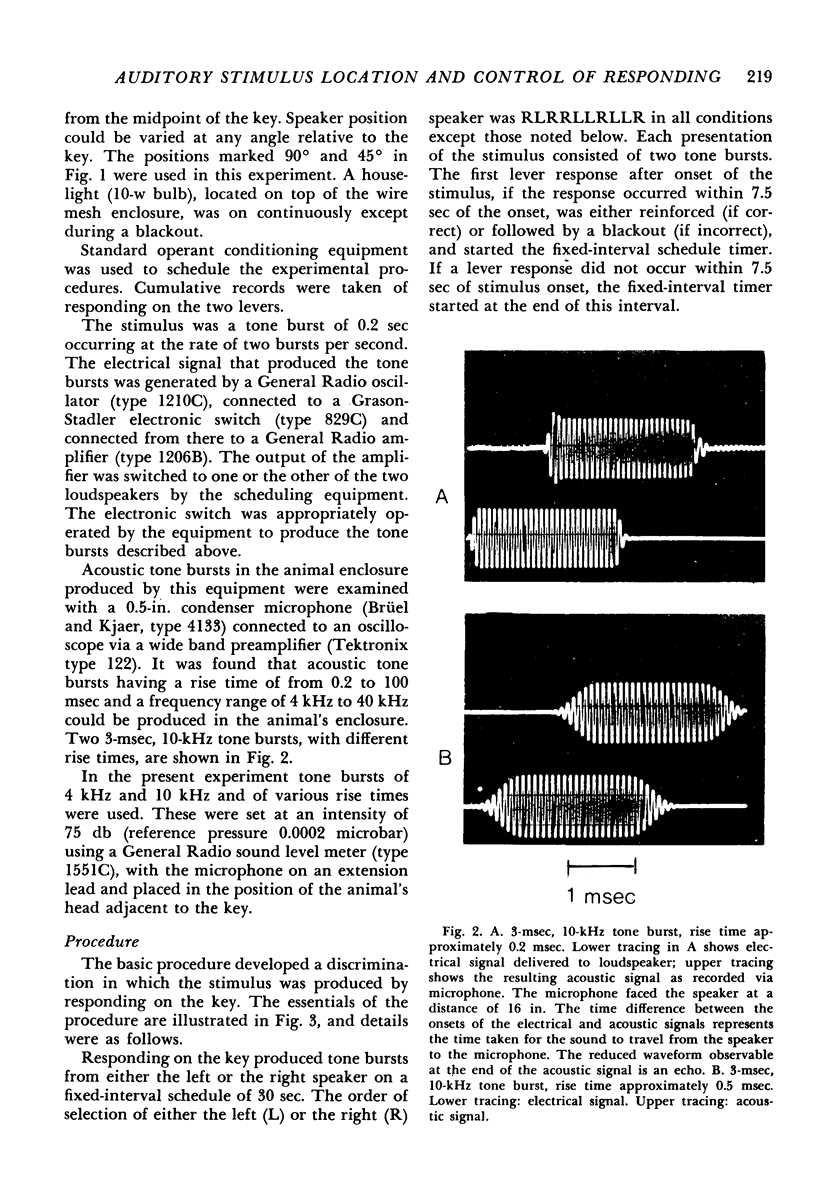
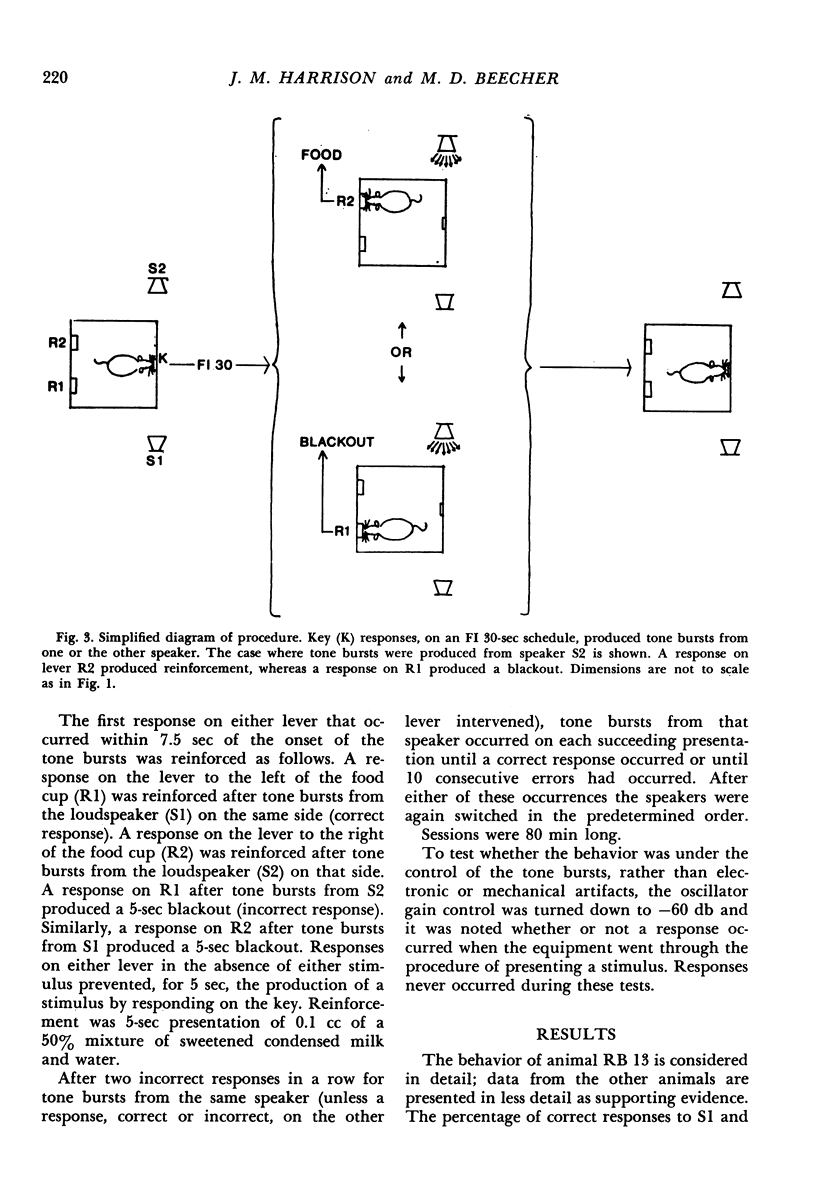
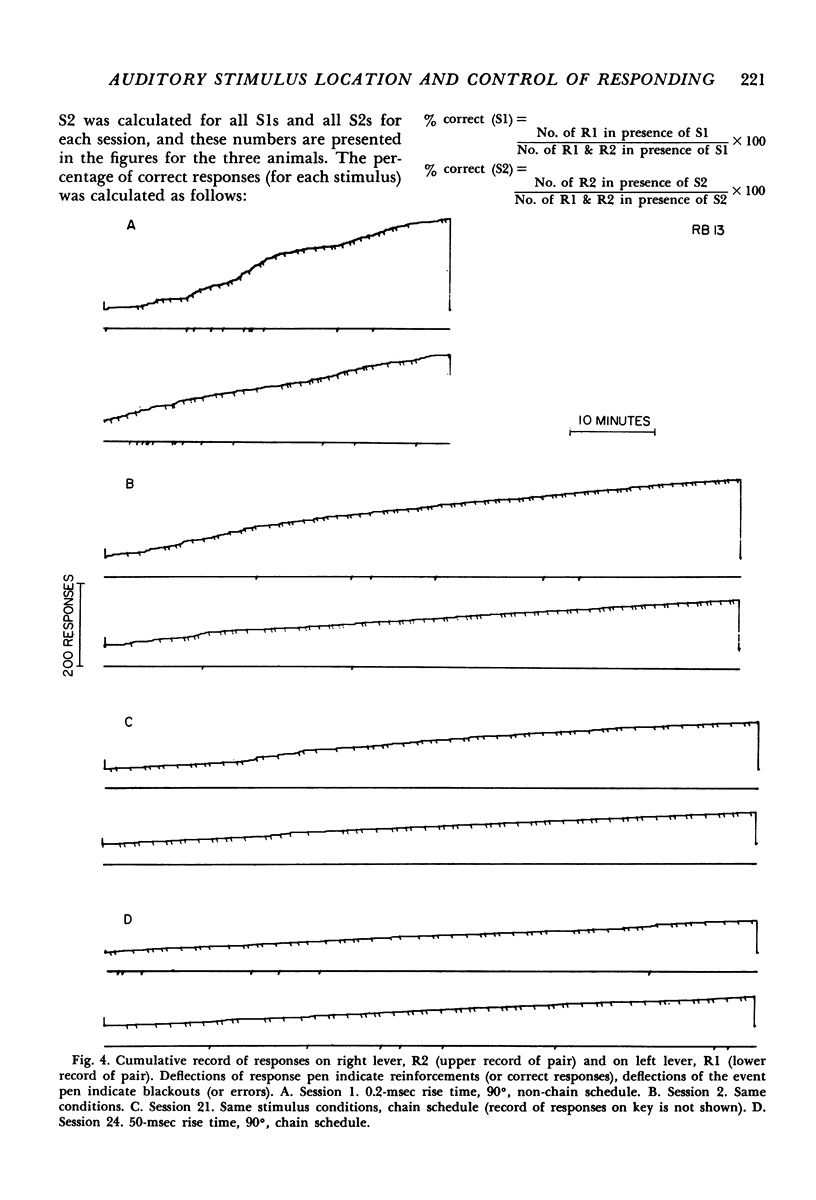
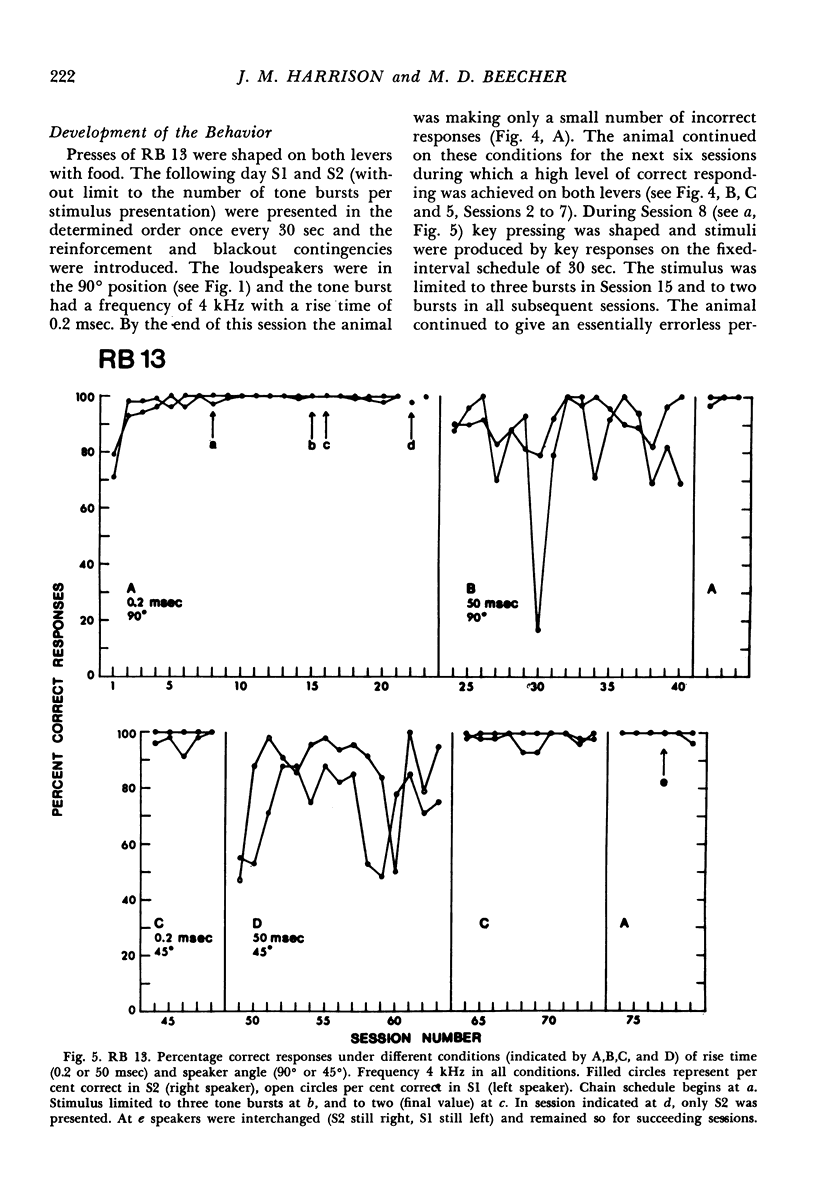
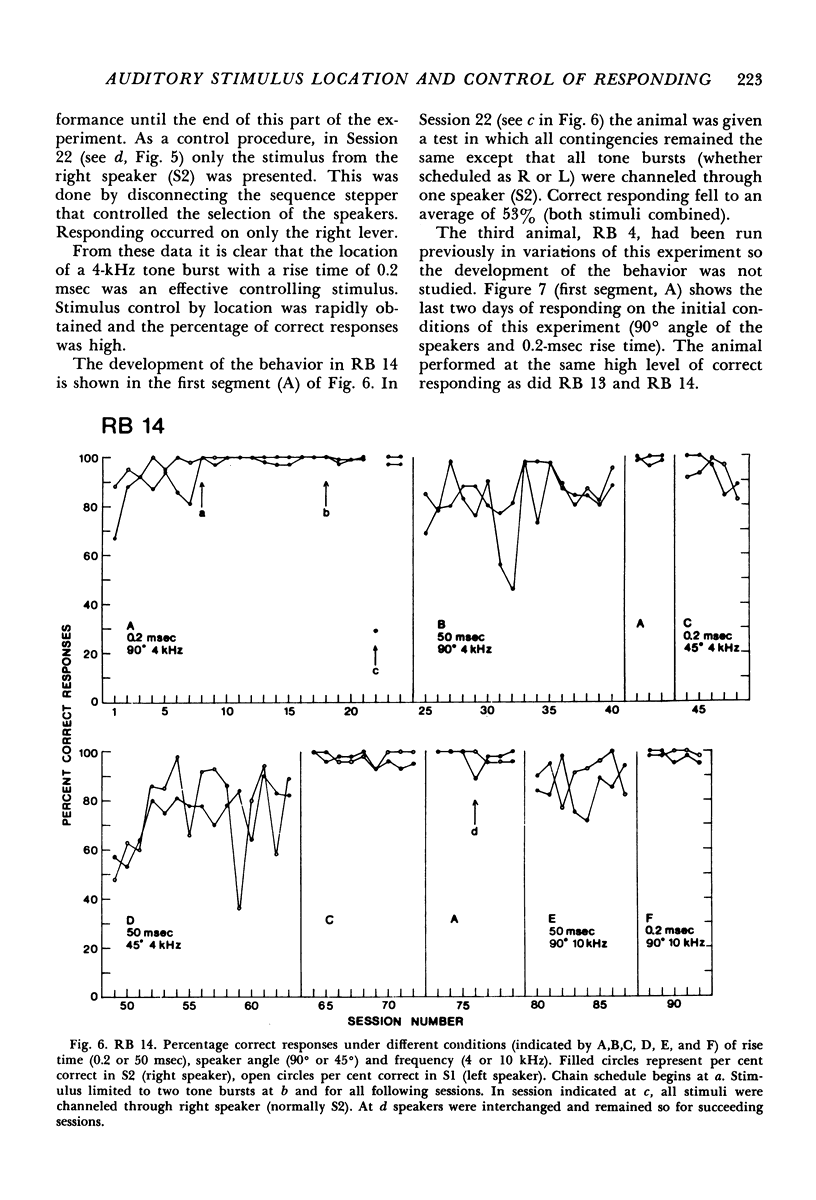
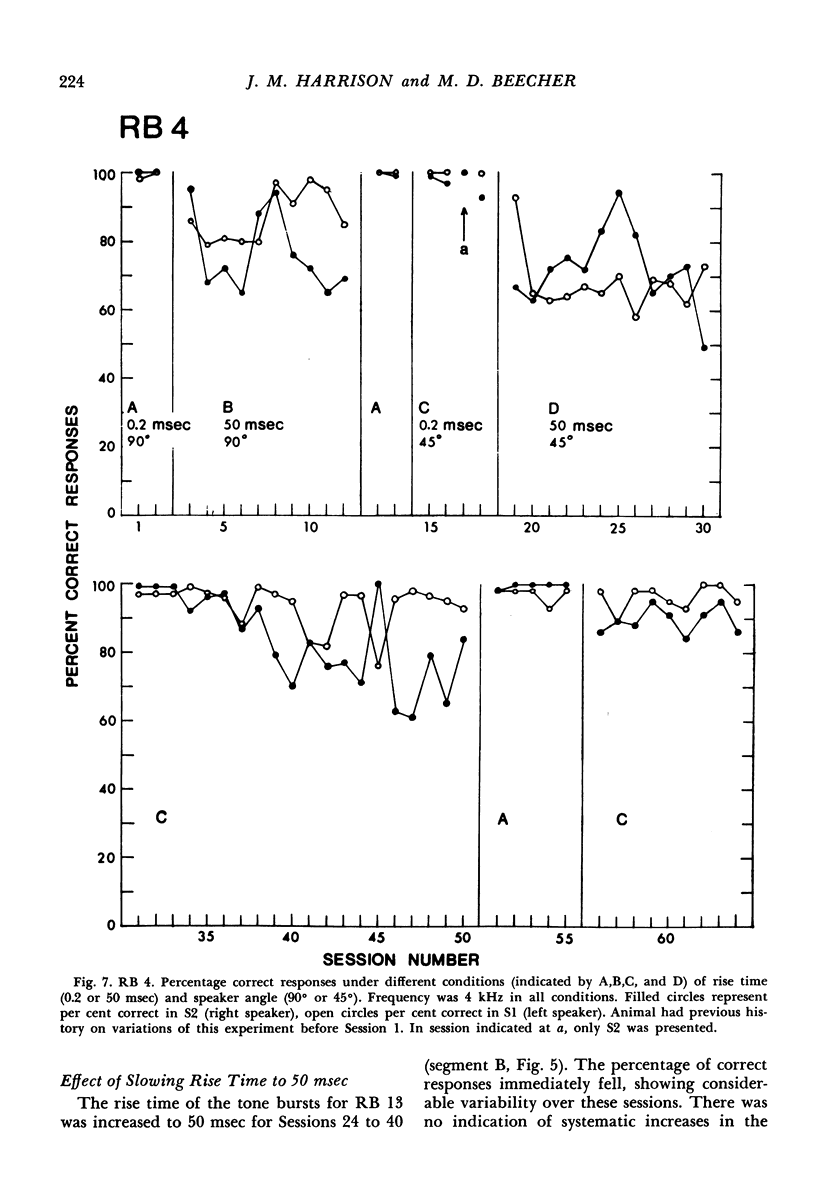
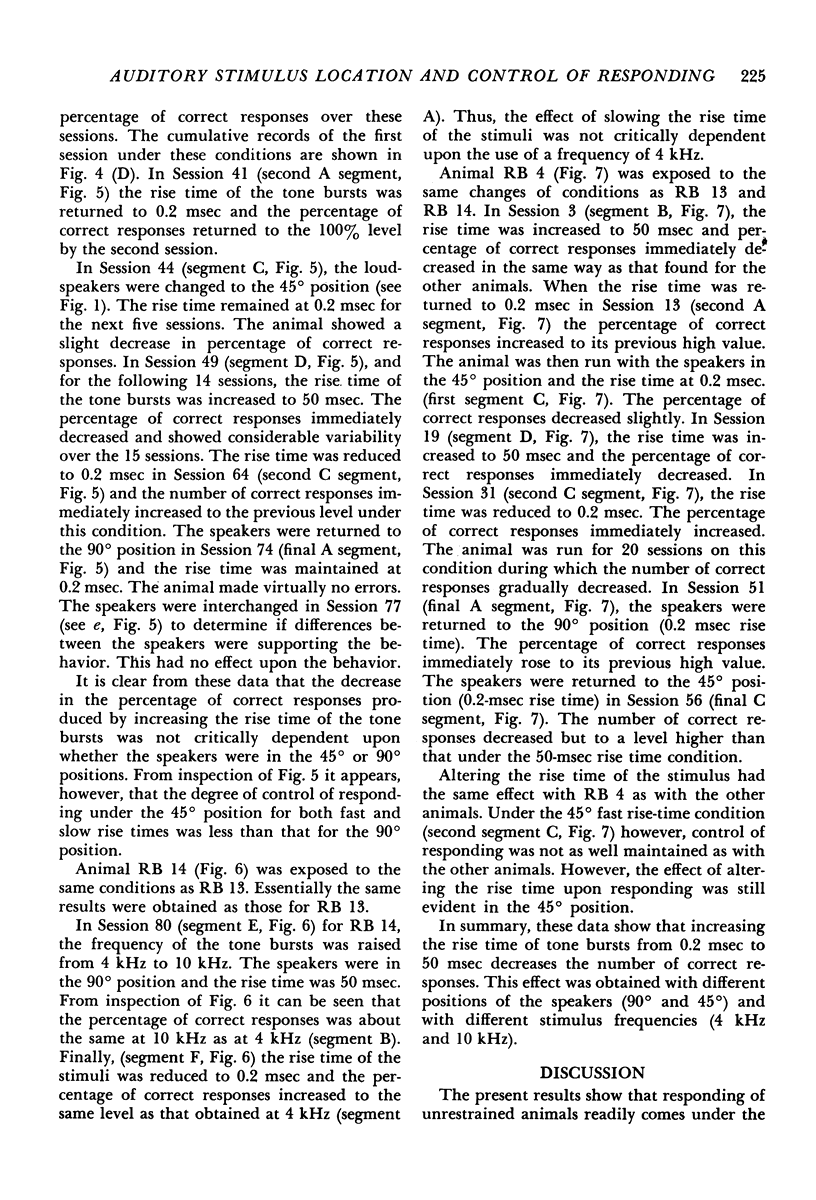
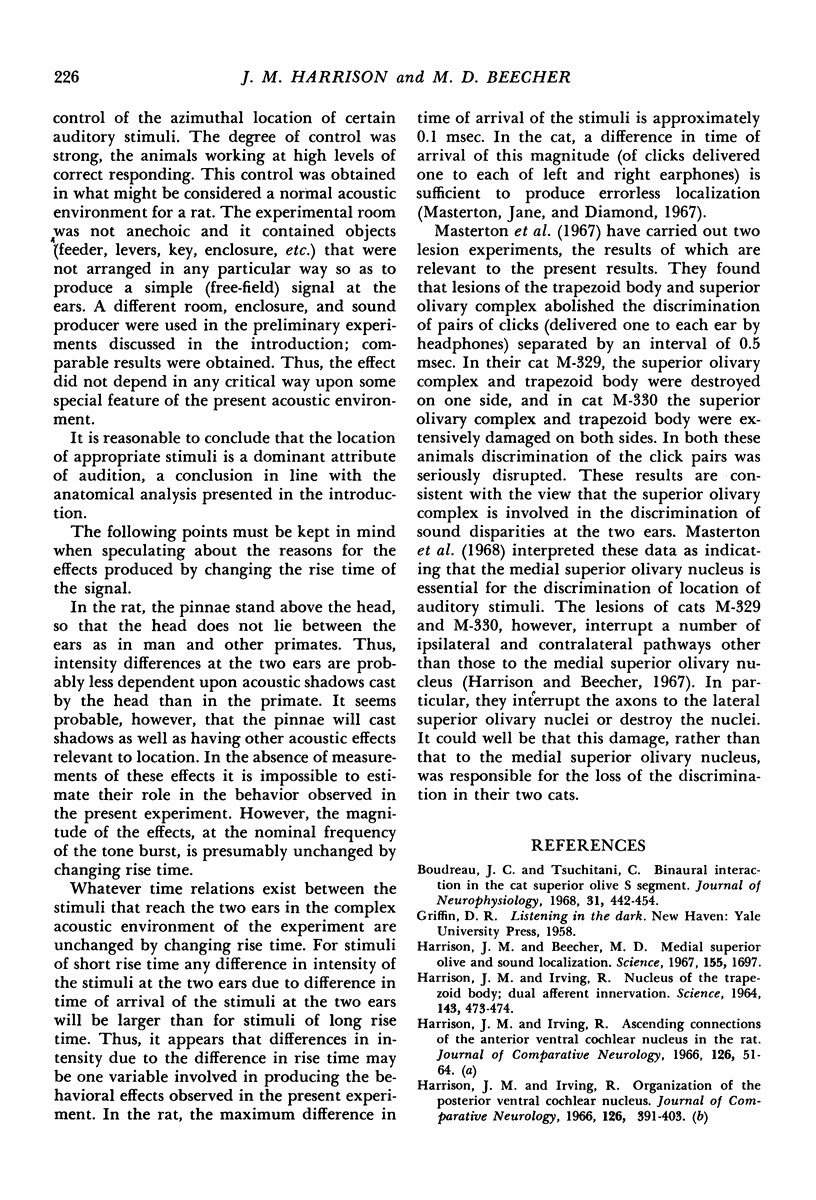
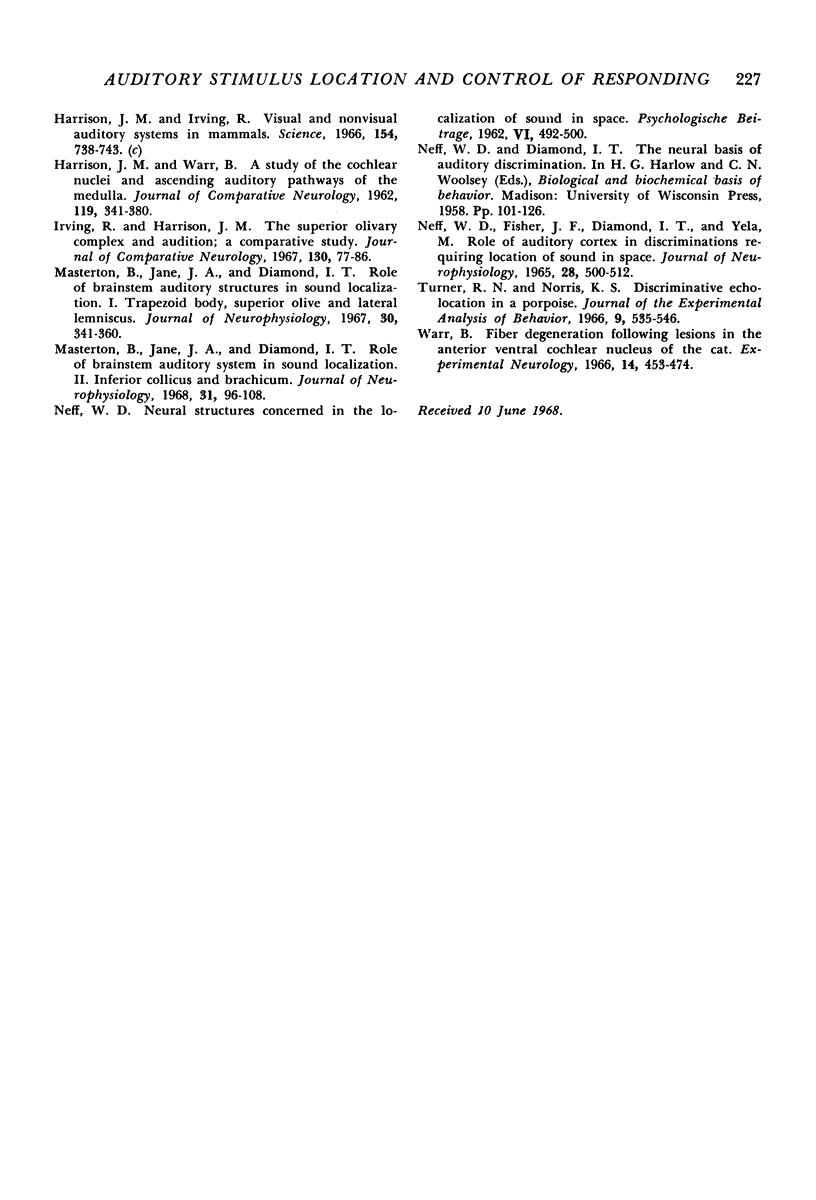
Selected References
These references are in PubMed. This may not be the complete list of references from this article.
- Boudreau J. C., Tsuchitani C. Binaural interaction in the cat superior olive S segment. J Neurophysiol. 1968 May;31(3):442–454. doi: 10.1152/jn.1968.31.3.442. [DOI] [PubMed] [Google Scholar]
- HARRISON J. M., IRVING R. NUCLEUS OF THE TRAPEZOID BODY: DUAL AFFERENT INNERVATION. Science. 1964 Jan 31;143(3605):473–474. doi: 10.1126/science.143.3605.473. [DOI] [PubMed] [Google Scholar]
- HARRISON J. M., WARR W. B. A study of the cochlear nuclei and ascending auditory pathways of the medulla. J Comp Neurol. 1962 Dec;119:341–379. doi: 10.1002/cne.901190306. [DOI] [PubMed] [Google Scholar]
- Harrison J. M., Irving R. The organization of the posterior ventral cochlear nucleus in the rat. J Comp Neurol. 1966 Mar;126(3):391–401. doi: 10.1002/cne.901260303. [DOI] [PubMed] [Google Scholar]
- Harrison J. M., Irving R. Visual and nonvisual auditory systems in mammals. Anatomical evidence indicates two kinds of auditory pathways and suggests two kinds of hearing in mammals. Science. 1966 Nov 11;154(3750):738–743. doi: 10.1126/science.154.3750.738. [DOI] [PubMed] [Google Scholar]
- Irving R., Harrison J. M. The superior olivary complex and audition: a comparative study. J Comp Neurol. 1967 May;130(1):77–86. doi: 10.1002/cne.901300105. [DOI] [PubMed] [Google Scholar]
- Masterton B., Diamond I. T., Harrison J. M., Beecher M. D. Medial superior olive and sound localization. Science. 1967 Mar 31;155(3770):1696–1697. doi: 10.1126/science.155.3770.1696-a. [DOI] [PubMed] [Google Scholar]
- Masterton B., Jane J. A., Diamond I. T. Role of brainstem auditory structures in sound localization. I. Trapezoid body, superior olive, and lateral lemniscus. J Neurophysiol. 1967 Mar;30(2):341–359. doi: 10.1152/jn.1967.30.2.341. [DOI] [PubMed] [Google Scholar]
- Masterton R. B., Jane J. A., Diamond I. T. Role of brain-stem auditory structures in sound localization. II. Inferior colliculus and its brachium. J Neurophysiol. 1968 Jan;31(1):96–108. doi: 10.1152/jn.1968.31.1.96. [DOI] [PubMed] [Google Scholar]
- Turner R. N., Norris K. S. Discriminative echolocation in a porpoise. J Exp Anal Behav. 1966 Sep;9(5):535–544. doi: 10.1901/jeab.1966.9-535. [DOI] [PMC free article] [PubMed] [Google Scholar]
- Warr W. B. Fiber degeneration following lesions in the anterior ventral cochlear nucleus of the cat. Exp Neurol. 1966 Apr;14(4):453–474. doi: 10.1016/0014-4886(66)90130-0. [DOI] [PubMed] [Google Scholar]


